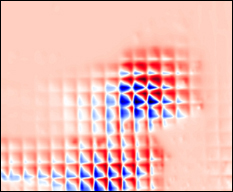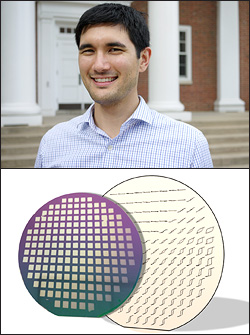News Story
New Lead-Free Material for Electronics

Associate Professor Ichiro Takeuchi.
Currently, Pb(Zr,Ti)O3 (PZT) is used as the piezoelectric material of choice for a variety of transducers, actuators, sensors, and microelectromechanical systems (MEMS) applications. PZT can be found in speakers and microphones, transducers for ultrasound, and memory devices in smart cards used for electronic payments. Because compounds containing lead are known to be hazardous to human health, the materials science community has been working hard to find a replacement for PZT.
According to Takeuchi, a European Union-based based study has found that the average resident of the UK generates about 7500 pounds of waste from electrical products and equipment such as TVs and refrigerators over the course of his or her lifetime. The Waste Electrical and Electronic Equipment Directive established in Europe calls for restriction of hazardous waste (RoHS). RoHS policies now prohibit the use of six specific materials in electrical equipment, including lead. (See ec.europa.eu/environment/waste/weee/ for more information.)
Luckily, lead-free substitutions have been found for many materials, such as solders and dielectric capacitors. For piezoelectric devices, however, no commercial replacement of PZT (which contains more than 40% lead by weight) has been found to date.
Takeuchi used the combinatorial synthesis strategy, which allows rapid screening of a large number of compositionally varying samples, to identify the new Pb-free compositions which reside at a phase boundary with substantially enhanced piezoelectric properties. The new material also has a relatively simple structure, which makes it easy to produce. These qualities make it a good candidate for a PZT replacement.
The discovery was recently reported in Applied Physics Letters 92, 202904 (2008) in an article titled "Combinatorial discovery of a lead-free morphotropic phase boundary in a thin film piezoelectric perovskite."
A provisional patent has been filed on the newly-found compounds.
Published June 15, 2008













